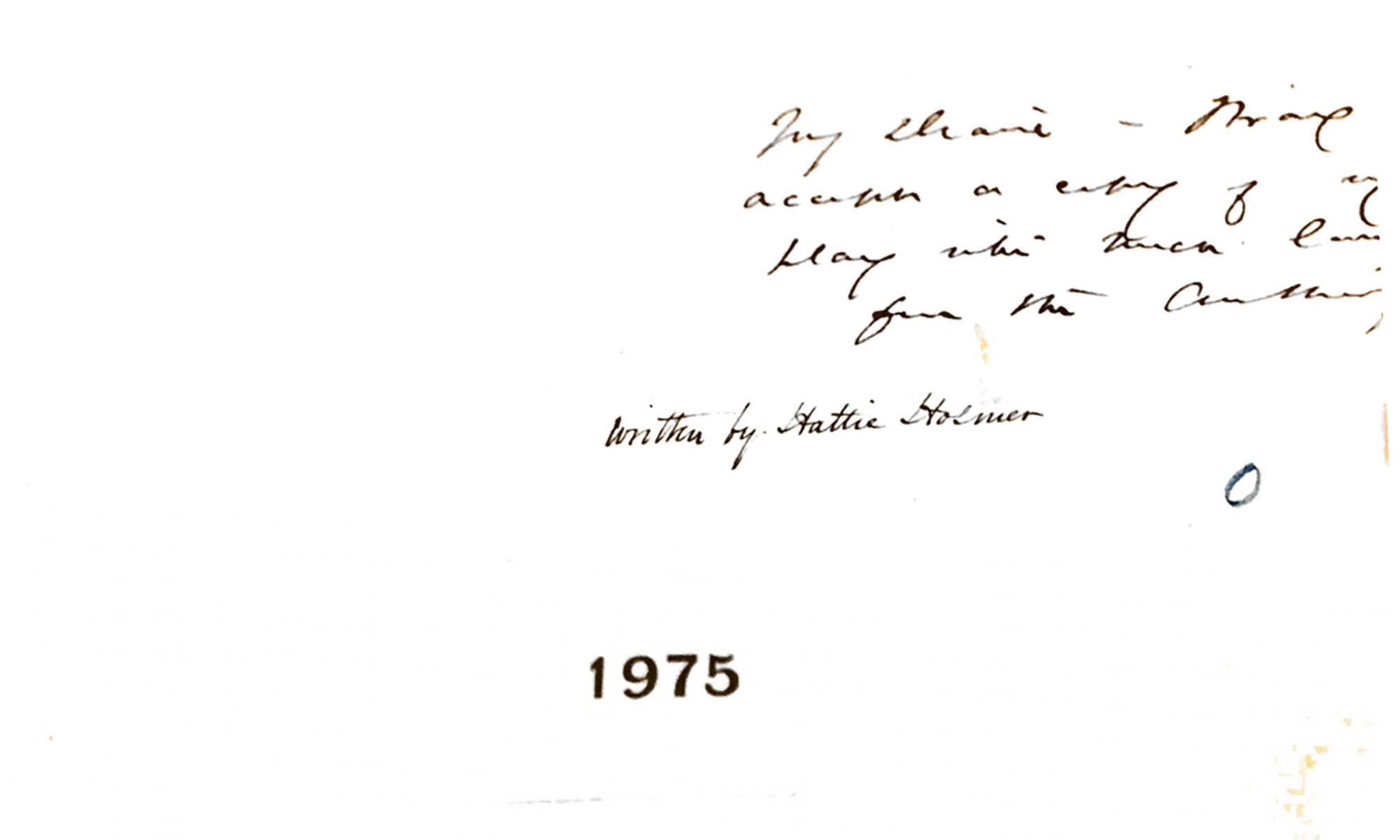Mediums, people believed to be able to communicate with the dead, were central to the interest in Spiritualism that rose in popularity in the second half of the nineteenth century. Hosmer considered herself a Spiritualist and reported several sightings of ghosts. (Braude). (Image: Occult Museum)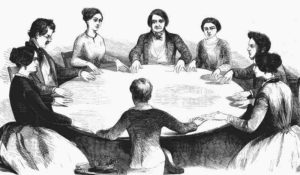
Mongolfior
Hosmer likely took the name Mongolfior from Joseph-Michel and Jacques-Étienne Montgolfier, brothers who invented the first hot air balloon in 1783 in France (The Montgolfier Brothers’ Balloon). (Image: Exp[é]rience a[ë]rostatique faite Versailles le 19 sept. 1783)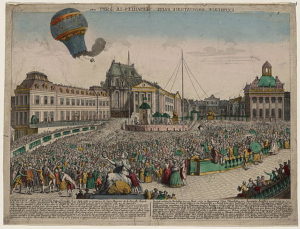
Mr. Briggs
Mr. Briggs could be Thomas Briggs, first person murdered on a train in Britain, though this doesn’t explain spurs and hunting boots. (Arkell)
Murray
John Murray’s Handbooks for Travelers, first published in 1836, were popular guidebooks for English speaking travelers throughout the nineteenth century (Goodwin and Johnson).
Newton
Charles Thomas Newton (1816-1894), an archeologist, was the British Consul at Rome in 1860 and the Keeper of Greek and Roman Antiquities of the British Museum from 1861 to 1885 (Wilson). (Image: Boehm).
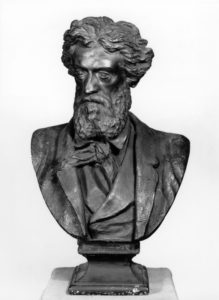
Preserved Mermaids
The American sea captain Samuel Barrett Eades displayed a preserved mermaid, consisting of the head of an orangutan, the jaws of a baboon, and the tail of a fish, at Covent Garden in London 1822. In 1846, P.T. Barnum exhibited the specimen, sometimes referred to as the Fiji or Feejee Mermaid, first in the United States and then London; Moses Kimball, founder of the Boston Museum, had purchased it from Eades’ son, and brought it to Barnum. Similar specimens were displayed throughout the nineteenth century. As of 2018, the British Museum collection included a preserved mermaid, acquired in 1942 (Bondeson) (Image: Figure of a Mermaid).
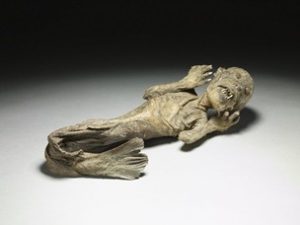
Sackship
From the 14th century through 2006, the Lord Chancellor sat on the Woolsack, a large red cushion stuffed with wool, in the House of Lords. Edward III started the tradition, to honor the roll of wool in the British economy. Since 2006, the Lord Speaker has occupied the Woolsack. (Woolsack). (Image: Bebbington).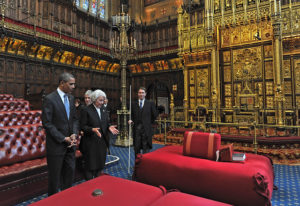
Sarah Gamp
Sarah Gamp, known as Sairey, is the drunken nurse and midwife in Charles Dickens’ novel Martin Chuzzelwit, first serialized from 1842 through 1844 by Hablot K. “Phiz” Browne. Gamp regularly refers to Harris, a woman, while going about her duties, but no one else has ever met her. Dickens explains, “the prevalent opinion was that she was a phantom of Mrs Gamp’s brain–as Messrs. Doe and Roe are fictions of the law–created for the express purpose of holding visionary dialogues with her on all manner of subjects, and invariably winding up with a compliment to the excellence of her nature.” (Allingham; Hawes) (Image: Tuck.)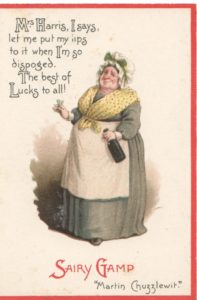
Sayers
Tom Sayers (1826-1865) was a famed bare-knuckle prize fighter who won 15 of the 16 matches he fought between 1849 and 1860. (Wright). (Image: “Tom Sayers.”)
seven branched candlestick
The seven branched candlestick is a reference to the gold Menorah stolen during the Roman raid on the Second Temple in 70 CE. and taken to Rome. Its location has been unknown since the 5th century, with speculation that the Vandals took it during the sack of Rome in 455 CE. There are many rumors about its location, including that it sunk to the bottom of the Tiber after a shipwreck (Povoledo).
